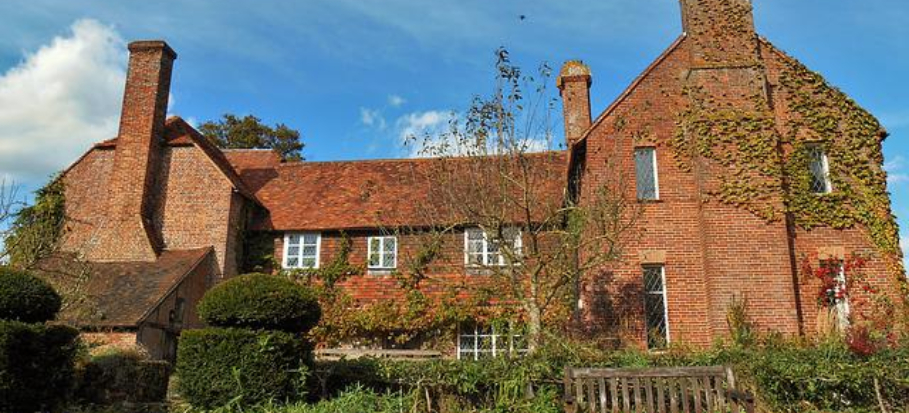5 Common Plumbing Problems in Old Houses

Plumbing problems can strike any home, from a brand-new build to a century-old property. Plumbing issues like a leaky faucet, clogged drain, or burst pipe can be minor annoyances or major emergencies. Understanding the most common plumbing problems, their causes, and possible fixes can save time, money, and stress.
Whether you’re dealing with plumbing issues in old houses or just want to prevent costly repairs, this guide covers short-term fixes, long-term solutions, and signs it’s time to call a licensed local plumber.
Common Plumbing Problems Every Homeowner Faces
- Leaky Faucets and Fixtures – A dripping tap not only wastes water but also raises your utility bill. Usually, worn washers or seals are to blame. In some cases, corrosion in the valve seat may require fixture replacement.
- Clogged Drains – Slow-draining sinks, clogged shower drains, and blocked bathtubs are often caused by hair, soap scum, grease, or foreign objects. For stubborn blockages, professional hydro jet drain cleaning is more effective than chemical drain cleaners.
- Burst or Leaking Pipes – Pipes can burst due to freezing, corrosion, or high water pressure. Immediate steps include shutting off the main water valve and calling an emergency plumber near me.
- Running Toilets – A constantly running toilet wastes hundreds of gallons per day. The usual culprit is a worn flapper or faulty fill valve.
- Low Water Pressure – If your shower has low water pressure, mineral buildup or a partially closed water pressure regulator may be to blame. In old homes, the cause might be narrowed galvanized pipes.
Typical Old-Home Plumbing Issues
| Plumbing problem | Signs | Risk if ignored | DIY-safe? | Pro plumber needed |
|---|---|---|---|---|
| Toilet leaking | Water at base, cistern refilling, higher bill | Subfloor rot, mould | Basic checks only | Wax/rubber seal, fill/flush valve, pan connector |
| Low water pressure | Weak shower/tap flow, uneven temperature | Appliance stress | Clean aerators | Pipework assessment, PRV/service, scale removal |
| Dripping taps & fixtures | Constant drips, staining, noise at night | Wasted water, valve wear | Washer/cartridge change | Reseat valves, new cartridges, mixer replacement |
| Blocked or slow drains | Gurgling, odours, water backing up | Overflow, pipe damage | Plunger, bio-enzymes | Mechanical rodding, high-pressure jetting, CCTV |
| Old pipes & pinhole leaks | Green/white crust, damp patches, metallic taste | Bursts, hidden damp | Visual checks only | Repipe sections, replace galvanised/lead, isolation |
Pipe-Related Issues
If your home is three to four decades old, chances are the piping material is defective today. Of course, it’s not supposed to last forever. Previously, lead, galvanised steel, and polybutene were the dominant piping materials. And each of them had problems. Nor can you expect them to stay intact.
Whatever the material that your pipes are made out of, they should be replaced every 20 years. If not, you will experience low water pressure, leaks, discoloured water (a factor that isn’t particularly good for your health), and frequent clogging.
If your home is old, and you’re experiencing low water pressure, or discoloured water, you need to get your pipes inspected. Companies that provide home maintenance services can look into your house’s pipes and recommend a solution according to your budget.

Sewer Line Problems
Nobody wants to go through the unpleasant experience due to issues with their sewer line? And talk about the rainy periods – how would you deal with those with a clogged sewer line? Because sewer lines are not visible, they rarely get our attention. And we only repair them once foul-smelling wastewater comes back up inside our homes. These sewer lines can be damaged by the roots, and sometimes remodelling or renovation requires their complete replacement.
Even if there are no signs of any damage, but your home is old, it’s worth getting them checked. Maybe a little cleaning or small repair can increase their lifespan.
Failing Fixtures & Connections
Another common, yet neglected issue with older homes is faulty faucets, fixtures, and supply line connections. They can’t last forever, and after a decade or two, you need to replace them. If you delay the replacement, you will experience low water flow and leaks due to wear and tear. And once the problem escalates, there might be no water flow at all. In fact, oftentimes, these issues occur when you are away.
As a result, hundreds of gallons of water are wasted overnight. But timely inspection can detect such problems at the earliest and any potential loss (or even a disaster) can be avoided. You can’t carry out this inspection on your own, as it requires all the essential plumbing tools and expertise.
Bellied Lines
Overtime, the pipes underneath your house slope or belly, and eventually restrict the water flow. In the case of a drain or sewer line, it can also push toxic wastewater back into your home. This problem is prevalent in old homes due to sheer negligence. To avoid this issue, watch out for signs of pipe bellies. Slow drains and nasty smells are two of the common signs indicating a bellied line.
Once again, if this problem occurs, you can’t fix it yourself. You will need an experienced plumber to come over and examine the damage.
Water Heater not Functioning Properly
Though this has nothing to do with the pipes and fixtures, it still falls into plumbing problems. You have been using the same water heater for years, and now you are experiencing the following problems:
● Inconsistent hot water
● Water leakage from the heater
● Temperature variations
● Some concerning sounds from inside
● Smelly water
Even if you notice just one of the above-mentioned signs, you should have it inspected. Maybe it’s time to change the water heater, or, if you are fortunate, a small repair will get it back to normal. Only a plumber can tell if it’s repairable or not. So consult as soon as possible, as, in case of a severe fault, the water heater might completely break down or blow up.
Who Should Fix or Inspect the Plumbing Problems in Your Home?
It’s easy to fall prey to the save-money mentality when it comes to handyman services. However, when you take these matters into your own hands or call any random repairer to inspect the issues, you will never reach a permanent solution.
Therefore, the wise thing is to consult technicians that employ the best plumbers. They would have the tools to carry out any complex inspection at your home. Sometimes plumbers have to use a camera to detect hidden problems in the pipes, sinks, and even water tanks.
An unqualified plumber would merely fix the problem to eliminate the signs, while the real problem remains intact. And it keeps getting worse until the pipe or sewer line gets clogged, or you find no water in your taps despite a full tank.
5 Common Plumbing Problems in Old Houses
Need help? Hire the London Property Service experts today by giving us a call on 020 3078 5920.




